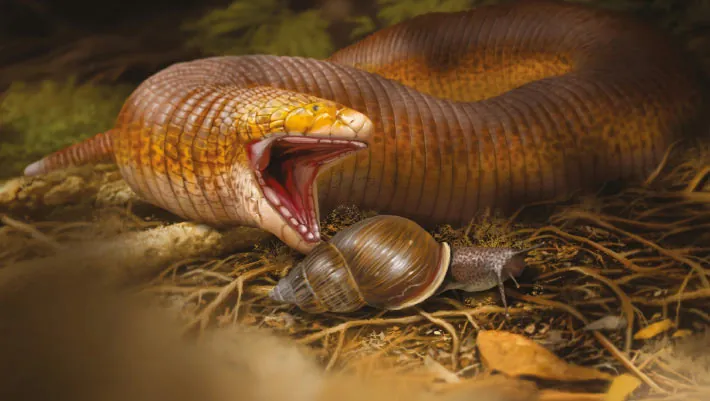
Meet the Giant of the Past: The World's Largest Worm Lizard from 47 Million Years Ago!
2024-11-22
Author: Nur
Introduction
Paleontological excitement ignites as researchers unveil an incredible discovery: a newly classified genus and species of trogonophid amphisbaenian, or worm lizard, hailing from fossilized remains discovered in Tunisia. Named Terastiodontosaurus marcelosanchezi, this ancient creature roamed the Earth approximately 47 million years ago during the Eocene epoch in what is now Africa.
Classification and Importance
Terastiodontosaurus marcelosanchezi belongs to the Trogonophidae family—a unique group of limbless, carnivorous reptiles that exhibit fascinating adaptations characteristic of their lineage. Dr. Georgios Georgalis, the lead researcher from the Institute of Systematics and Evolution of Animals at the Polish Academy of Sciences, highlights the captivating complexities and peculiar anatomy of amphisbaenians, which have intrigued scientists since the 19th century.
Evolutionary Insights
Historically, amphisbaenians were considered a separate subgroup alongside snakes and lizards. However, recent phylogenetic studies have revealed that they are more closely related to lacertid lizards, leading to the proposed name "Lacertibaenia" for this grouping.
Fossil Record and Rarity
The fossil record of amphisbaenians is relatively rich across Europe and North America, yet sparse in Africa—with Terastiodontosaurus marcelosanchezi representing only the fifth known extinct species on the continent. "This discover adds significant value to the scant African fossil record of Amphisbaenia," stated the research team, emphasizing the rarity of such finds.
Discovering the Remains
The remarkable fossilized remains were excavated from the Natural Park of Djebel Chambi in Tunisia, a site known for its diverse assemblage of both terrestrial and aquatic vertebrates, including fish, amphibians, reptiles, and mammals. At over 90 cm (35 inches) in length, Terastiodontosaurus marcelosanchezi stands out as the largest known amphisbaenian species ever recorded, exceeding even the current largest living member, Amphisbaena alba, which reaches up to 81 cm (32 inches).
Lifestyle and Adaptations
Interestingly, while modern amphisbaenians are predominantly burrowing creatures, characteristics observed in Terastiodontosaurus marcelosanchezi suggest it may have lived a different lifestyle as a surface dweller. Its formidable size raises the question of adaptations that would have allowed it to thrive on the surface rather than below ground.
Conclusion
This groundbreaking discovery highlights the ongoing mystery of prehistoric life and sheds light on the evolutionary history of reptiles. The findings have been published in the latest edition of the Zoological Journal of the Linnean Society, paving the way for future research on ancient biodiversity.
Future Prospects
What other secrets do the layers of Earth hold? Stay tuned as paleontologists continue their quest to unravel the mysteries of our planet's history!

 Brasil (PT)
Brasil (PT)
 Canada (EN)
Canada (EN)
 Chile (ES)
Chile (ES)
 España (ES)
España (ES)
 France (FR)
France (FR)
 Hong Kong (EN)
Hong Kong (EN)
 Italia (IT)
Italia (IT)
 日本 (JA)
日本 (JA)
 Magyarország (HU)
Magyarország (HU)
 Norge (NO)
Norge (NO)
 Polska (PL)
Polska (PL)
 Schweiz (DE)
Schweiz (DE)
 Singapore (EN)
Singapore (EN)
 Sverige (SV)
Sverige (SV)
 Suomi (FI)
Suomi (FI)
 Türkiye (TR)
Türkiye (TR)